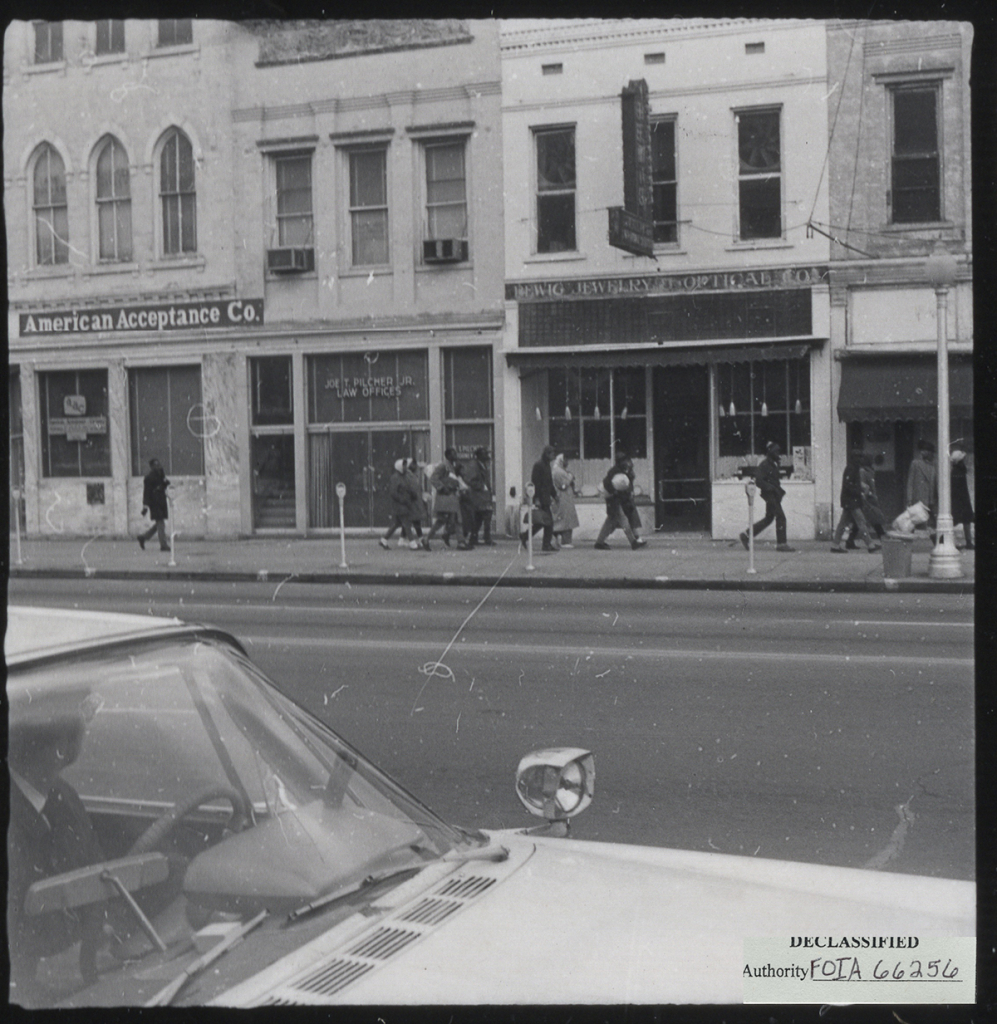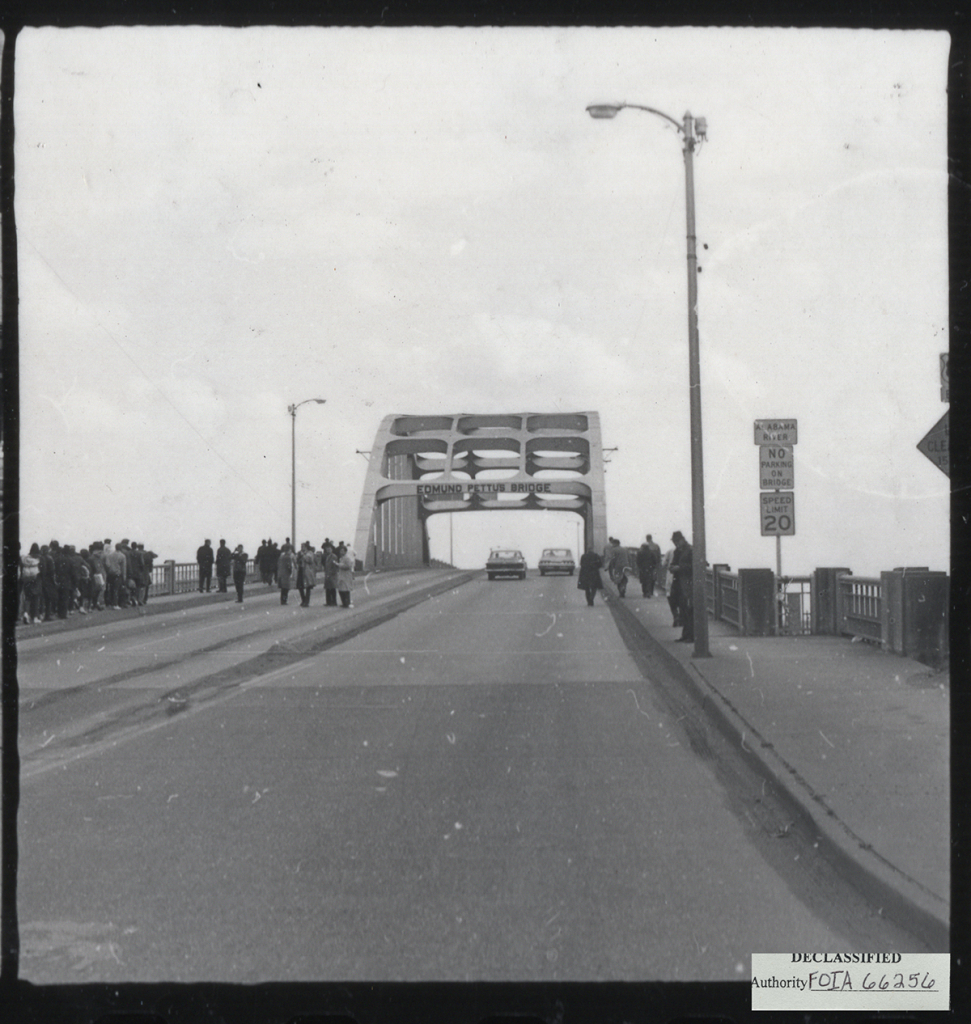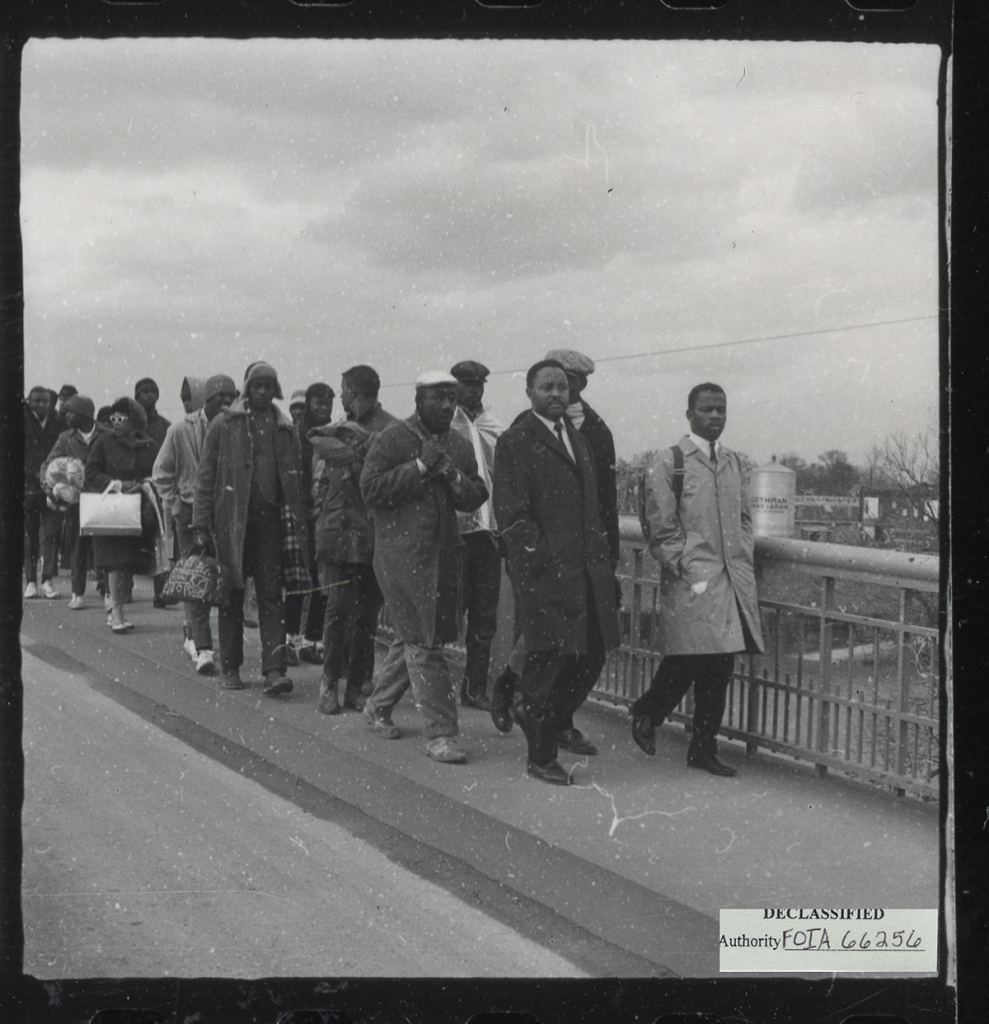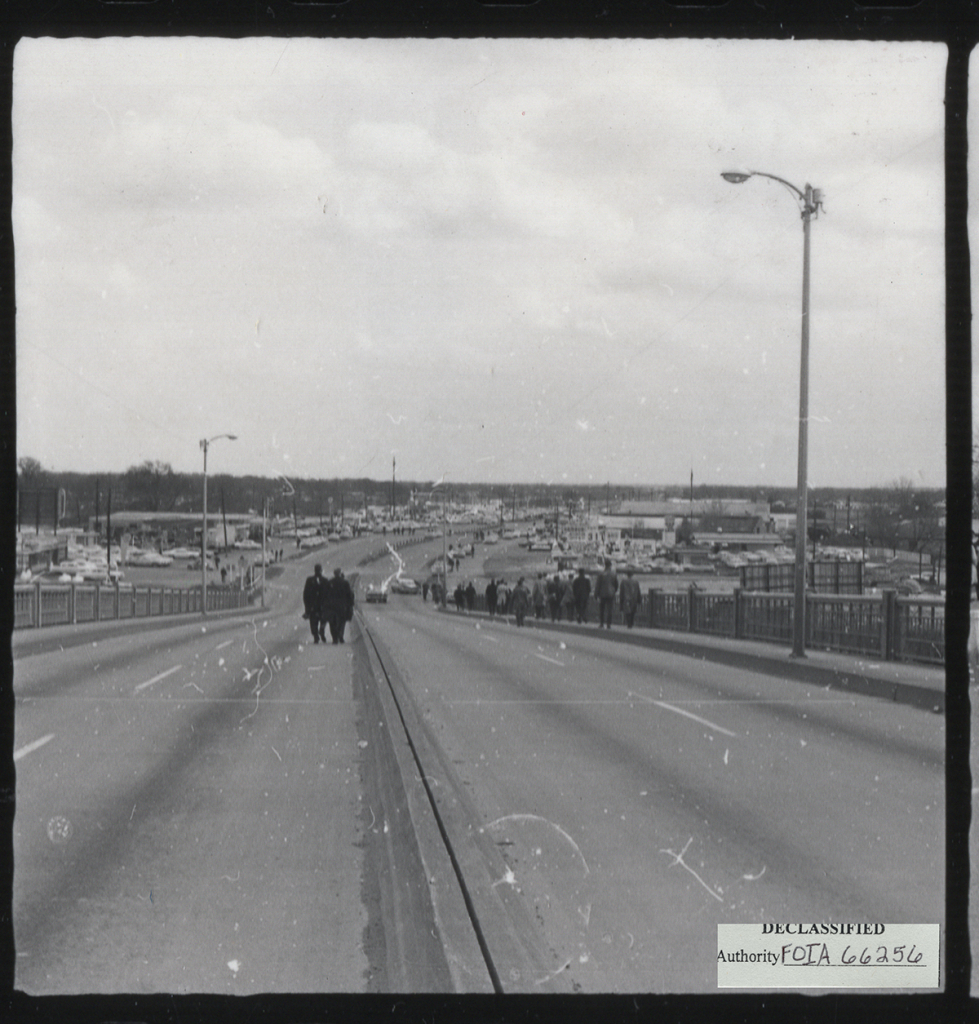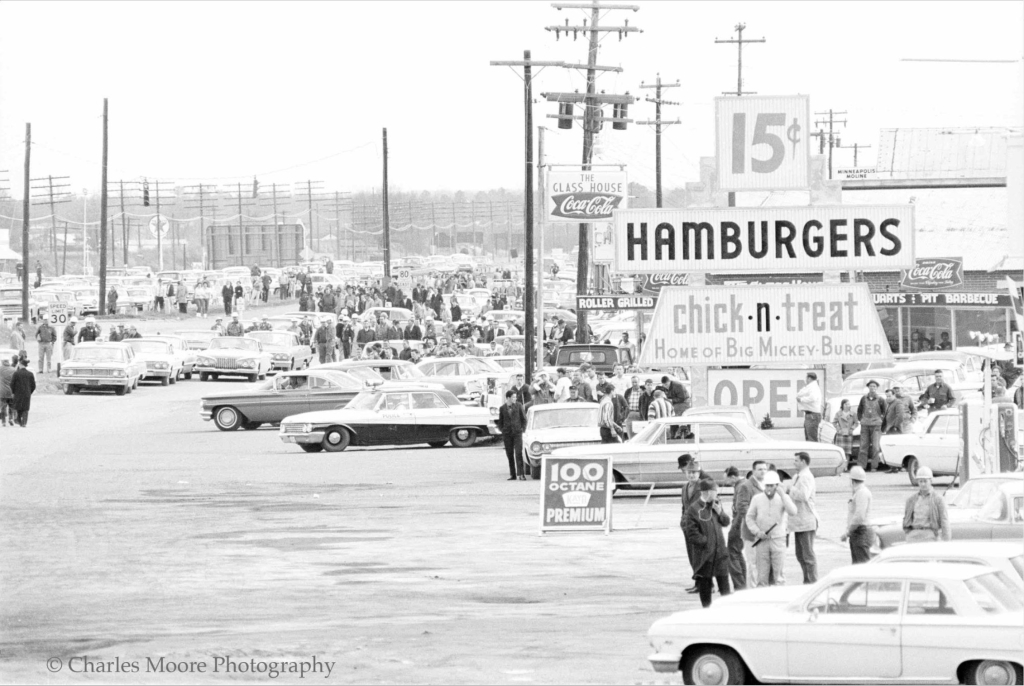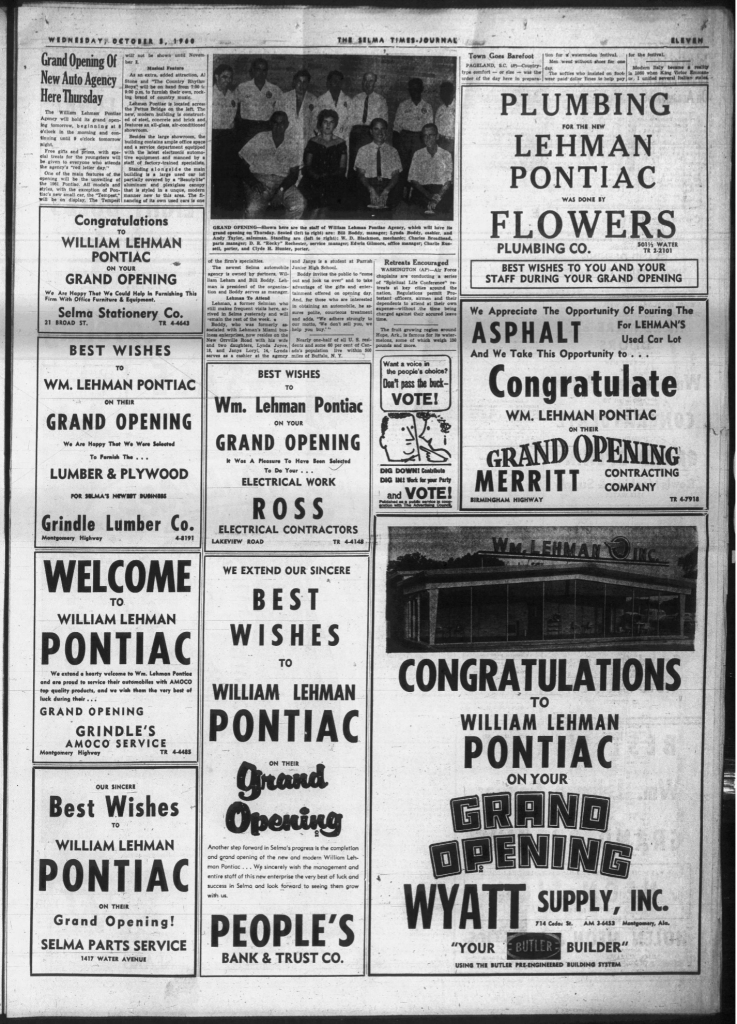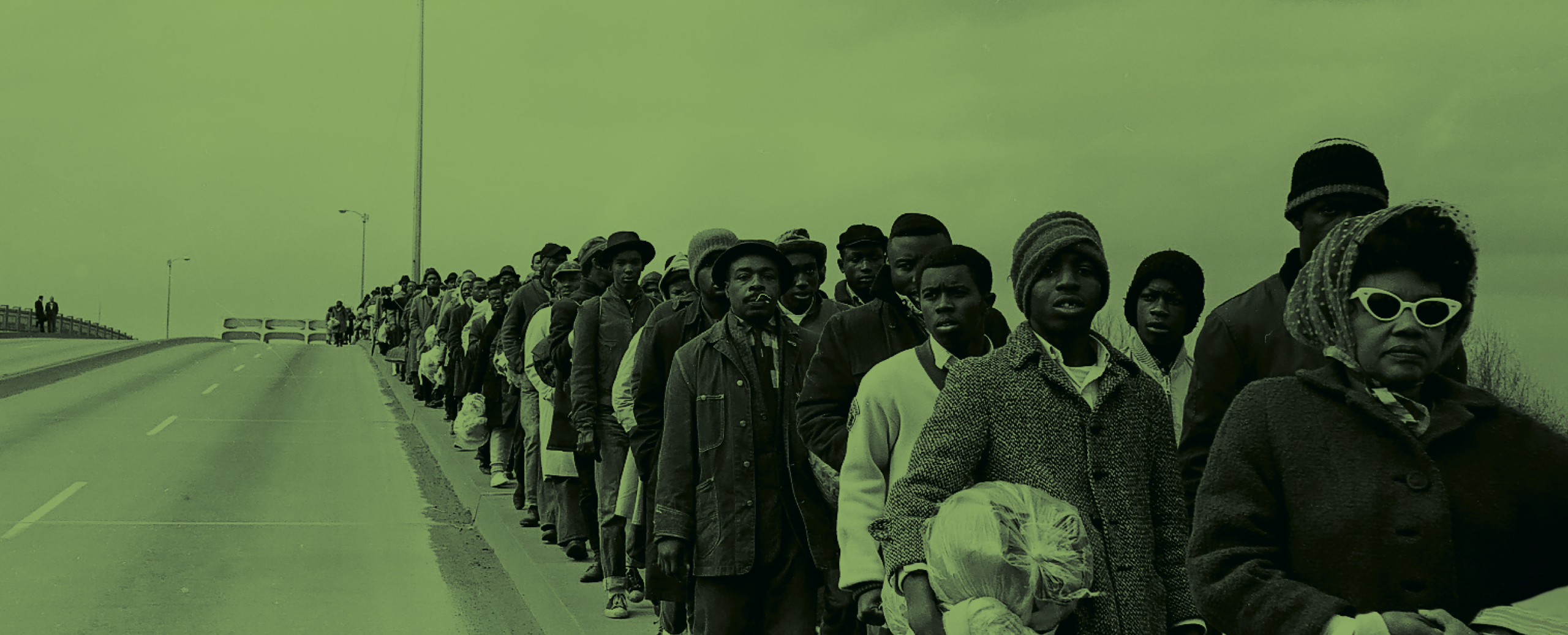
MARCH
a strange quiet fell over Selma As the Foot Soldiers marched along Sylvan Street, Alabama Avenue, and Broad Street.
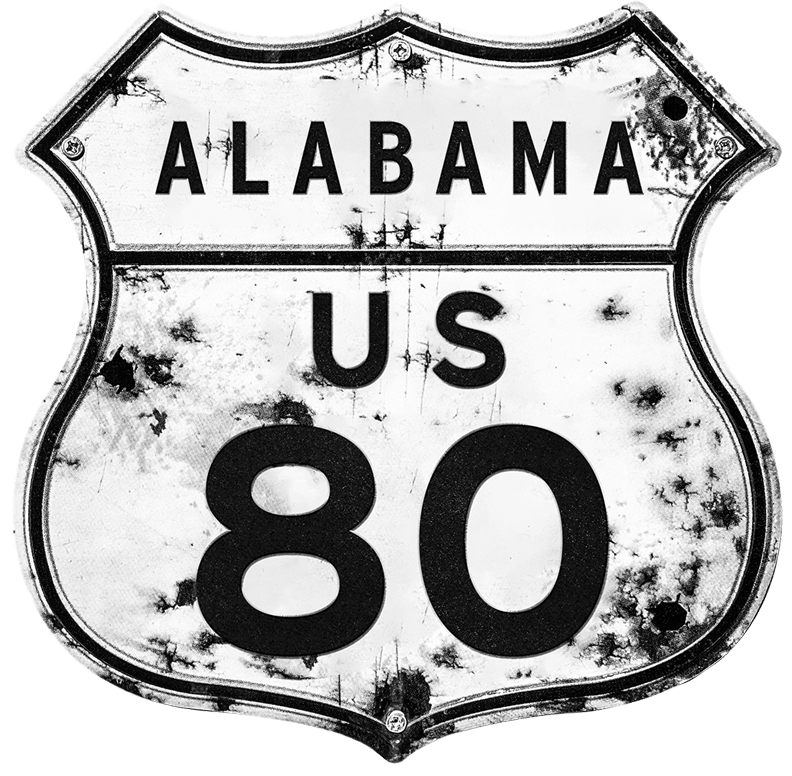
As they approached the Edmund Pettus Bridge, the song “Bye Bye Blackbird” could be heard from a nearby building taunting the marchers. Reports had reached the marchers about a gathering of police across the bridge in Selmont. Upon reaching the bridge’s crown, a large assembly of armed police could be seen a few hundred yards in the distance near the Lehman Pontiac dealership. Undeterred, the foot soldiers crossed the bridge and continued to within a few yards of the line of heavily armed police that blocked Highway 80’s southbound lane.
THE MARCH ROUTE
As the 600-plus foot soldiers marched through Selma, they exchanged polite conversations among themselves but refrained from singing or engaging with any white protestors along the route. The foot soldiers formed into groups no more than two persons wide to avoid violating Selma’s parade ordinance that restricted the movements of large groups on city sidewalks. As they passed along Alabama Avenue and walked up Broad Street to the Edmund Pettus Bridge, they passed numerous white owned local businesses whose operators opposed a Black citizen’s right to vote. Many of those white businessmen belonged to the Selma White Citizens Council — a hate group organized by white people to resist racial integration and civil equality
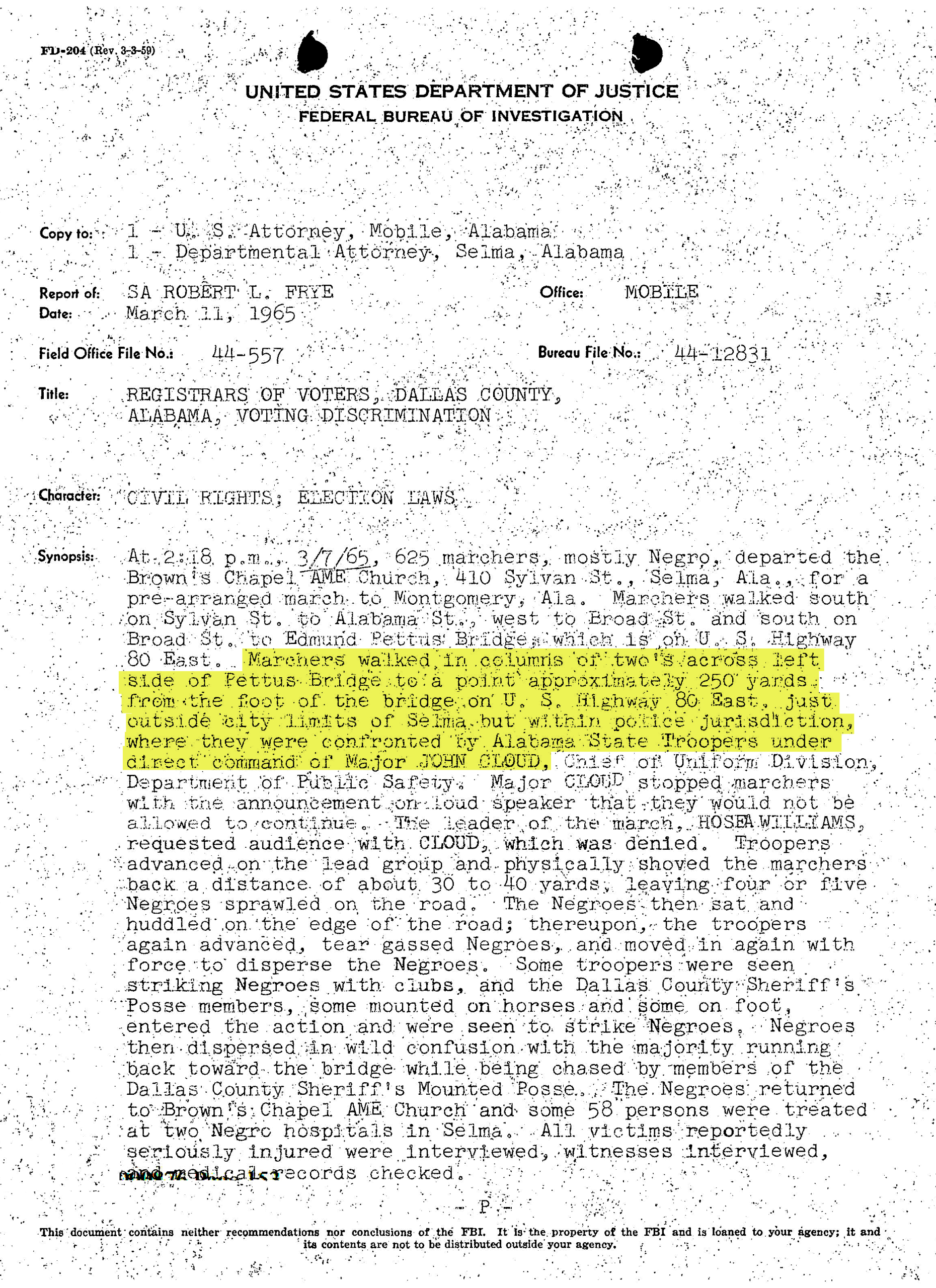
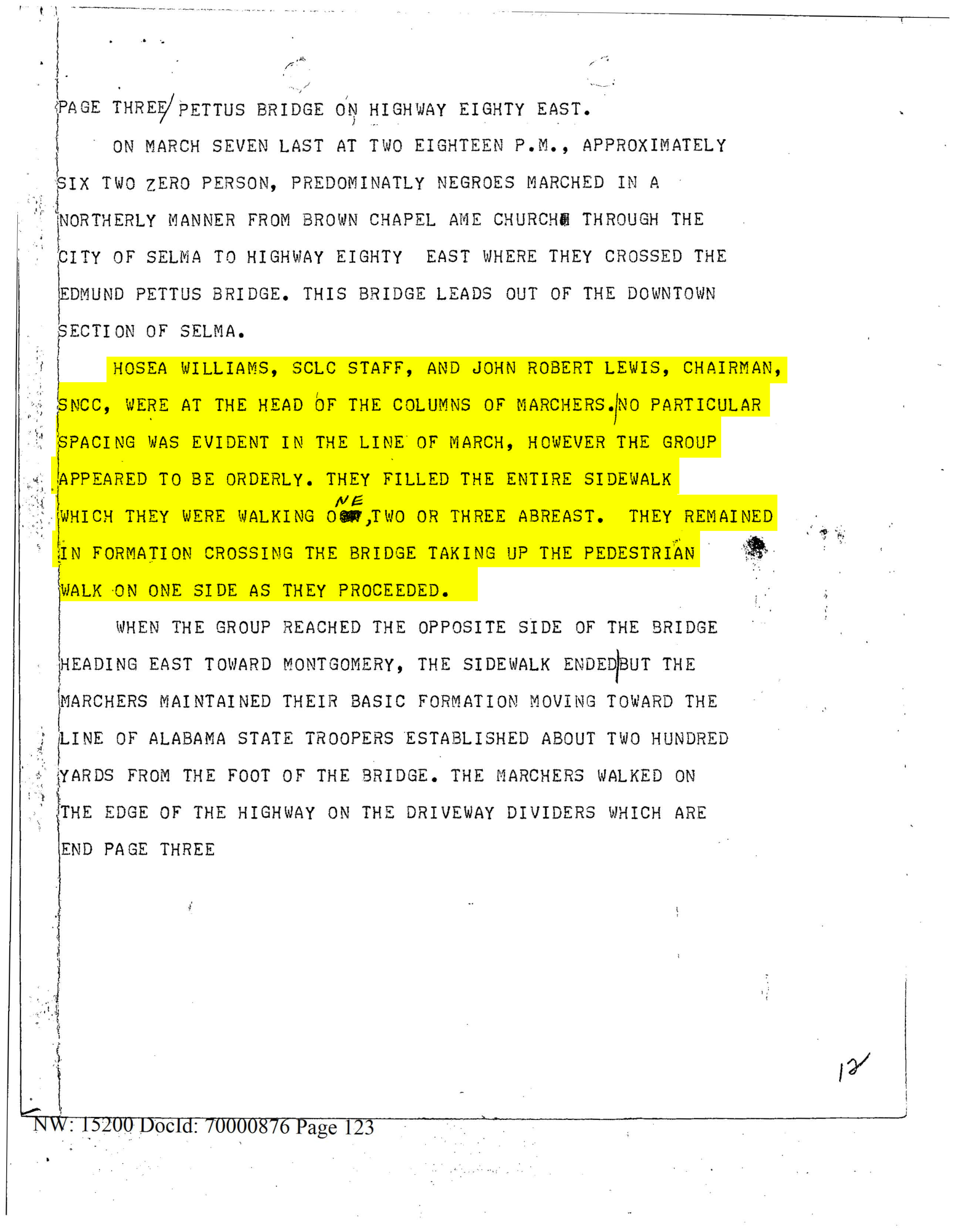
Screened By: NARA Date: 03-02-2015 DOCID: 70000876
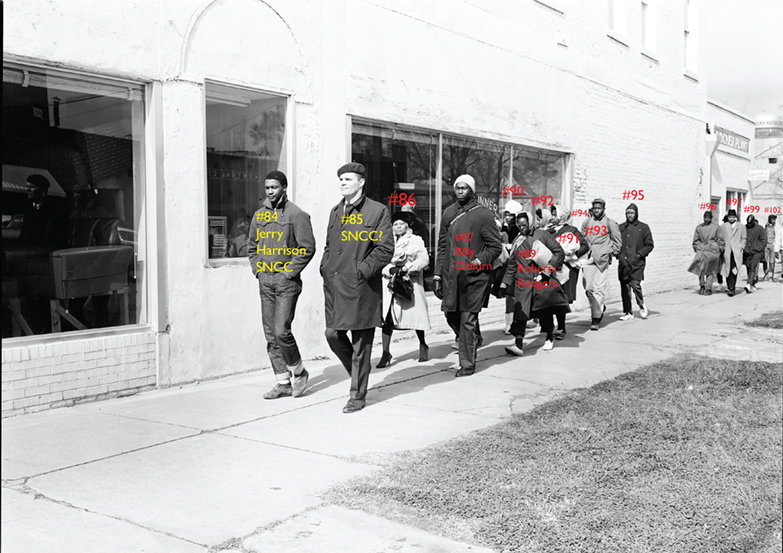
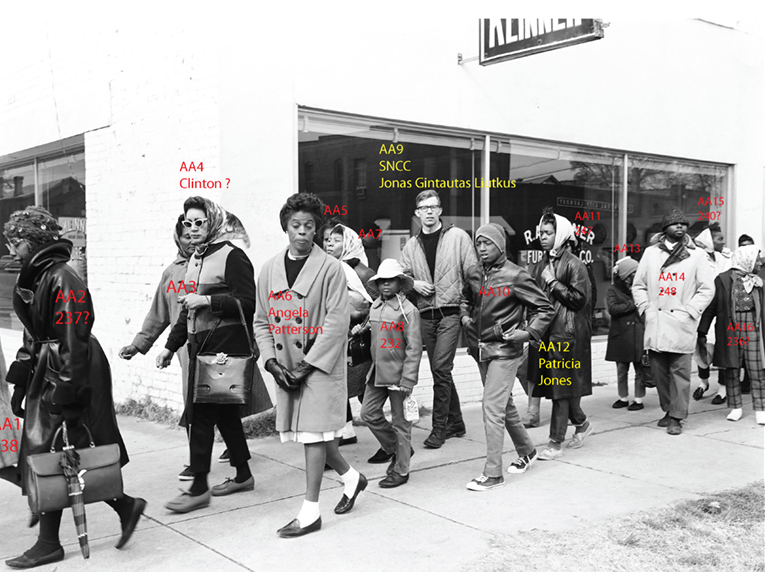
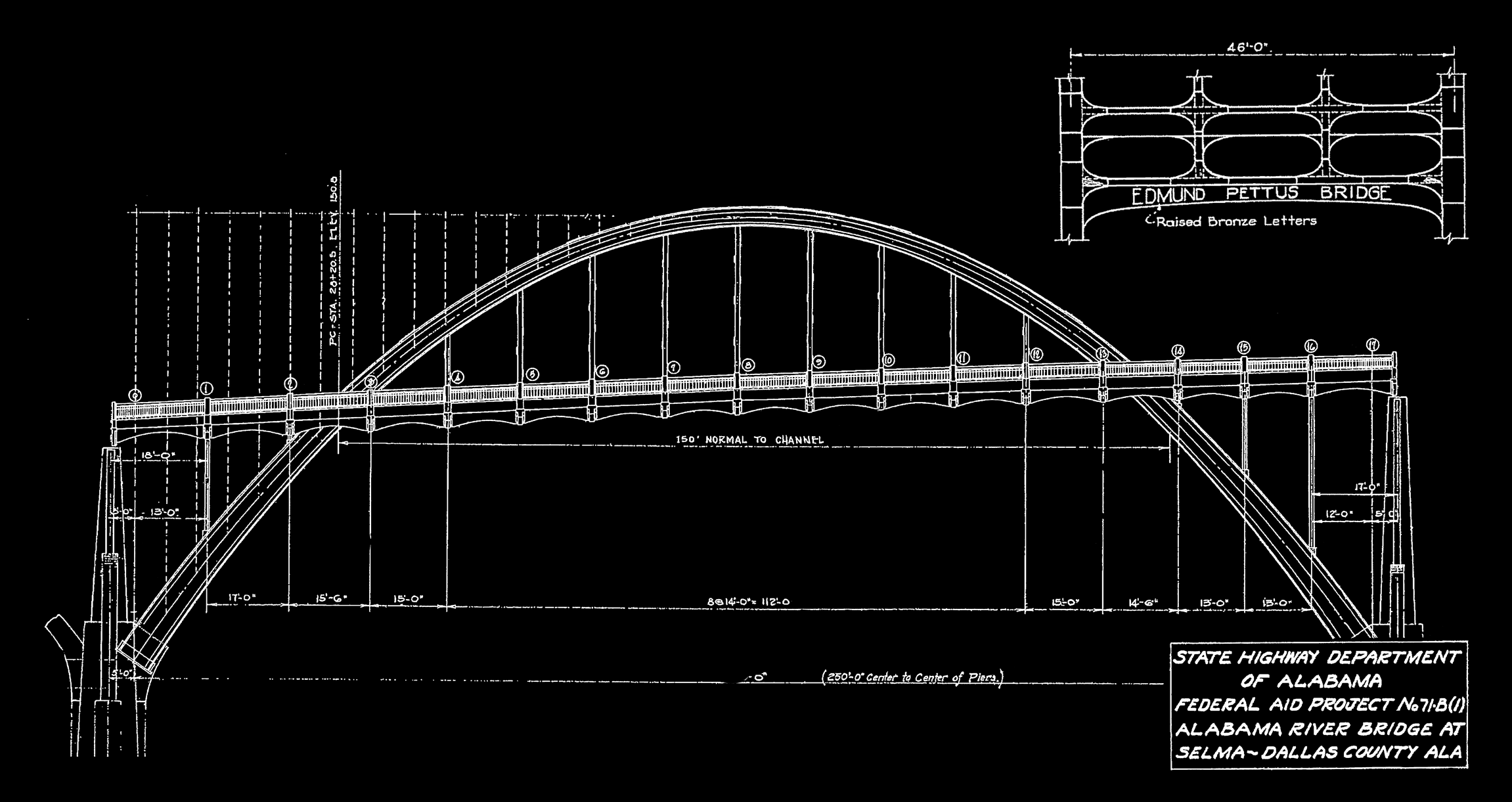
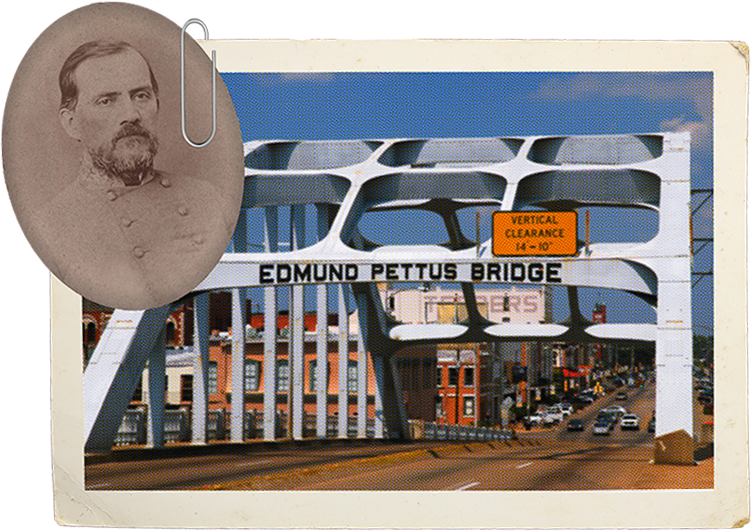
EDMUND PETTUS BRIDGE
Throughout the United States, numerous public buildings, structures, and siteshonor the lives of infamous white supremacists such as General Edmund Pettus who was an enslaver, white supremacist, American traitor, Confederate general, US Senator, and Ku Klux Klan leader. Built in 1939, the bridge is a National Historic Landmark and living symbol of the Civil Rights Movement and the brave foot soldiers who crossed over the Alabama River on March 7, 1965. Tens of thousands of visitors make apilgrimage to Selma annually to cross the Edmund Pettus Bridge.
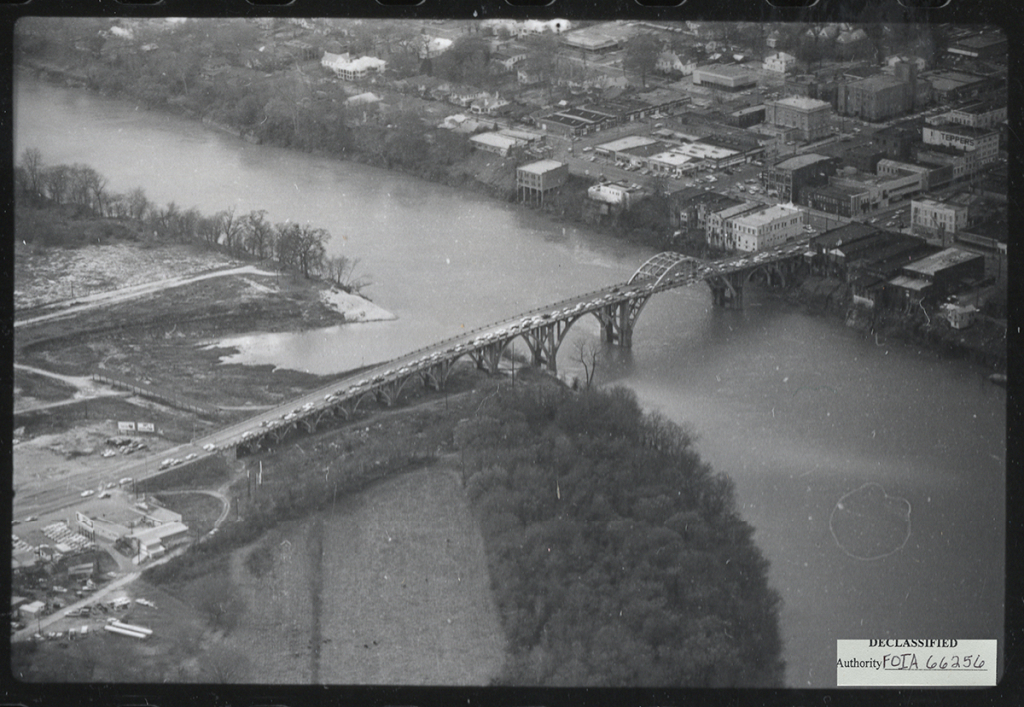
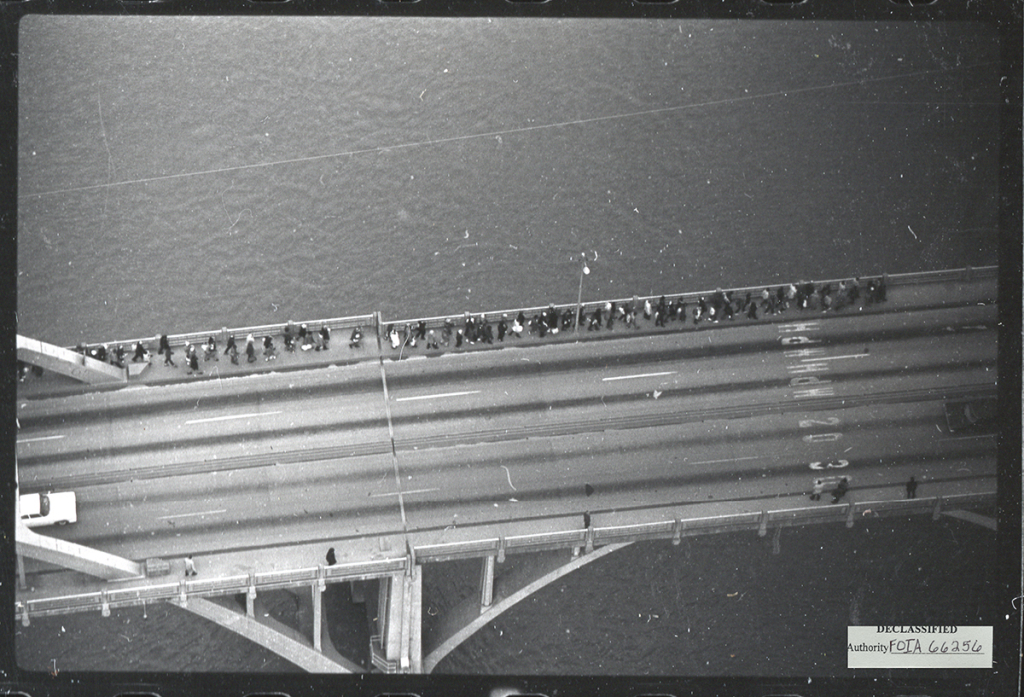
SELMONT
Located south of the Edmund Pettus Bridge, Selmont hosted numerous businesses at the time of Bloody Sunday. The unincorporated community served the many employees of nearby Craig Air Force Base who commuted daily from Selma to work. Many of the events of Bloody Sunday happened in Selmont.
